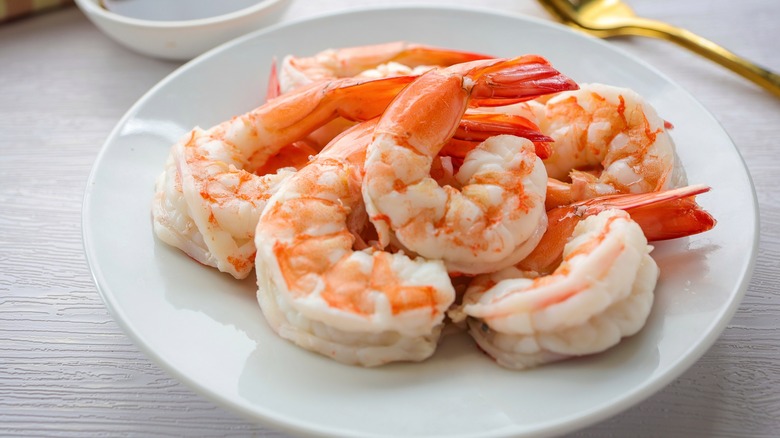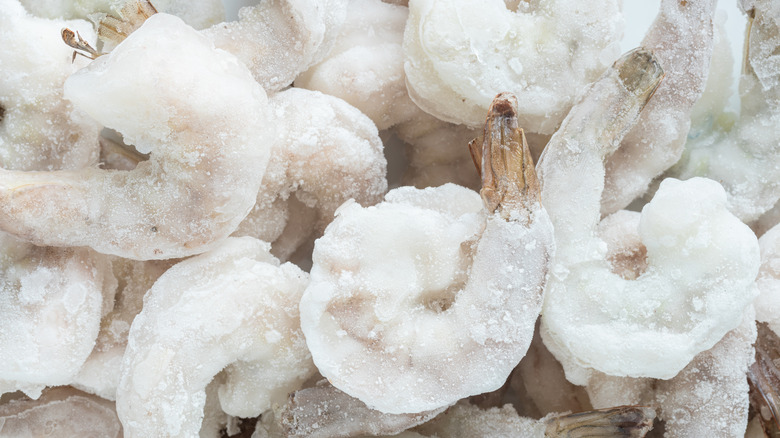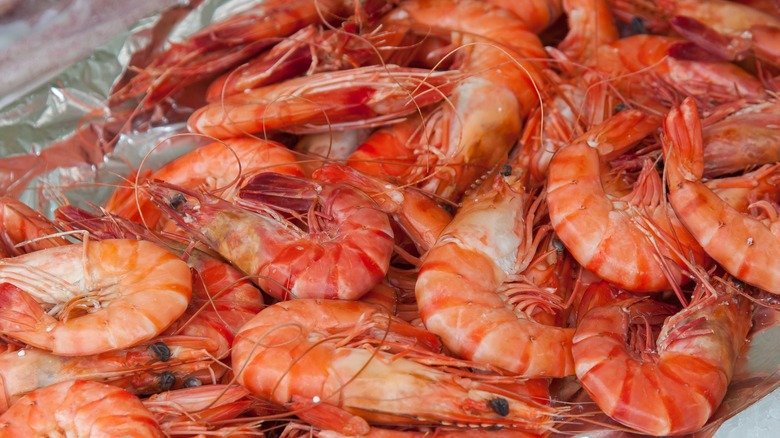The Big Flavor Difference Between Fresh And Frozen Shrimp
Some debates never end, not even the seemingly harmless one about fresh shrimp being so much better than frozen. I'm one of those people that has stood in the seafood aisle, paralyzed by indecision. If you can relate, I'm sure you know it's annoying, especially if you catch yourself trying to throw together a fancy meal. For the sake of confused shrimp buyers the world over, I'm willing to throw my hat in the ring and settle this debate once and for all.
If you're chasing peak flavor, fresh shrimp wins. It's often noticeably sweeter, more tender, and less, how do you say, shrimpy? The superiority of fresh shrimp is especially true when you snag some right from the coast, where it hasn't been frozen, thawed, and passed around like a party favor. If you live away from the ocean or don't want to spend half your grocery budget on shellfish, frozen shrimp can still get the job done. The decision may ultimately come down to whether you're trying to save a few bucks. Either way, these tips will come in handy when buying shrimp.
Frozen shrimp still has a lot going for it
Though it may not win in the flavor category, frozen shrimp still has a strong case. For starters, it's convenient because it stores well, thaws quickly, and can be cooked straight from frozen in a pinch. That makes it ideal for home cooks who want to keep seafood on hand without worrying about spoilage. It's also much more accessible to people living far from the coast, where the "fresh" shrimp at the store may have been frozen and thawed before hitting the display; resulting in a significant loss in quality.
In fact, most shrimp sold in supermarkets — even those labeled as "fresh" — have likely been previously frozen. Freezing at the time of harvest is a common industry practice to preserve quality during transport. So unless you're buying directly from a local dock or fish market, that "fresh" shrimp may not be all that different from the bag in the freezer section anyway.
The other major bonus with frozen shrimp is the price. It's typically more budget-friendly than fresh options and is available in a variety of sizes and preparations (peeled, deveined, cooked, raw, etc.), which makes it easy to work into everyday meals. When handled and cooked properly, frozen shrimp tastes great and is perfectly suitable for stir-fries, pastas, tacos, and more.
What to consider when choosing shrimp
If taste is your main concern, the source and handling of your shrimp matters just as much as whether it's fresh or frozen. Fresh shrimp, particularly when caught locally and sold quickly, tends to have a clean, slightly sweet flavor that stands out in simple dishes. It also tends to cook more evenly and has a better texture when done right. But freshness can be tricky to judge. Look for shrimp that smells clean (not overly fishy) and has firm flesh with no sliminess or discoloration.
For frozen shrimp, the quality depends on how it was processed and how long it's been stored. Look for shrimp that's individually quick frozen (IQF) and avoid packages with lots of ice crystals or signs of freezer burn. These are indicators the shrimp may have thawed and refrozen at some point, which can negatively affect flavor and texture.
So, what's the verdict? Both fresh and frozen shrimp can have a place in your kitchen. If you're throwing together a quick weeknight dinner, frozen shrimp is a reliable, affordable option. But if you're planning a special meal or want to highlight the natural flavor of the shrimp in a simple dish, fresh shrimp from a reputable local source is worth the splurge.


